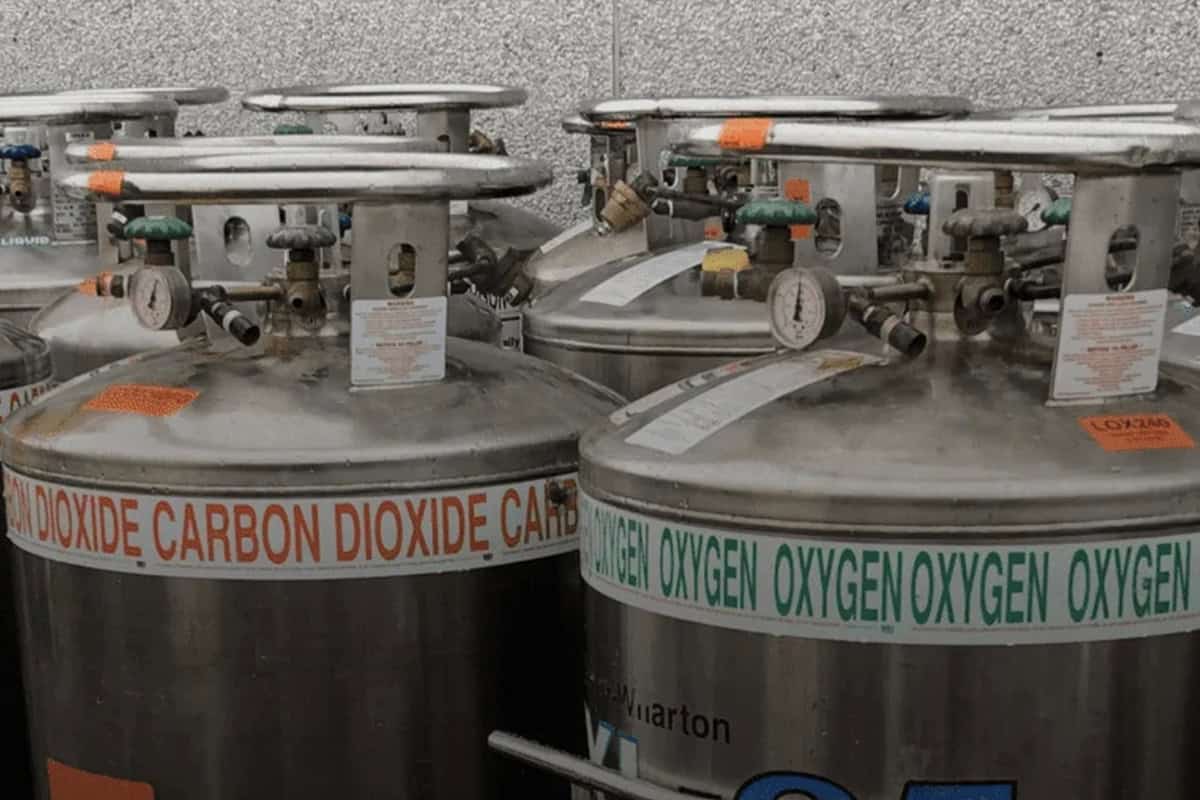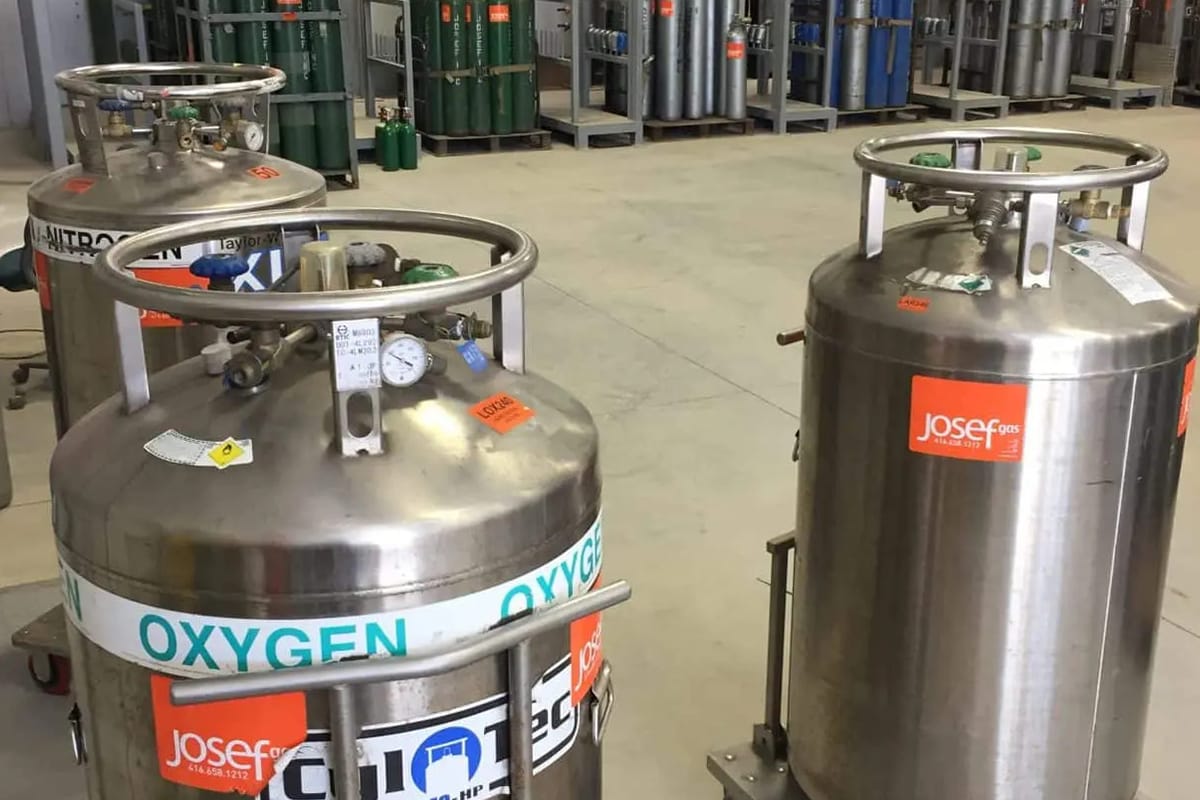Your Guide to Choosing the Right Welding Gas in Toronto
August 4, 2025 3:43 pmWelding is a trade that relies on precision and a deep understanding of materials and processes. A crucial, yet often overlooked, element is the choice of welding gas. The gas you use isn’t just an afterthought; it’s a fundamental component that directly influences the quality, strength, and appearance of your weld. In the bustling industrial heart of Toronto, where projects range from intricate artistic metalwork to large-scale structural builds, selecting the right gas is paramount.
From shielded metal arc welding (SMAW) to gas metal arc welding (GMAW) and gas tungsten arc welding (GTAW), each process demands a specific atmospheric shielding. The gas creates a protective barrier, preventing atmospheric contaminants like oxygen and nitrogen from compromising the weld. Using the wrong gas can lead to porous, brittle, or weak welds, causing project failure and costly rework. This guide will demystify the options, helping you make an informed choice for your next project, whether it involves steel, aluminum, or other metals. We’ll also touch on practical considerations, like where to get reliable welding gas in Toronto supplies and how to manage your gas cylinders efficiently.
Understanding Your Welding Gas Options
Choosing the right gas for your project is about more than just picking one off the shelf. Different gases and gas mixtures serve different purposes and are compatible with various metals and welding processes. Getting this right is the first step toward a perfect weld.
- Argon
- When to Use It: Argon is the go-to gas for gas tungsten arc welding (GTAW), also known as TIG welding. It’s a key ingredient for welding non-ferrous metals like aluminum, copper, and magnesium, as well as reactive metals such as titanium. It’s also a major component in mixtures for gas metal arc welding (GMAW), or MIG welding, on aluminum and stainless steel.
- What It Does: Argon provides a very stable arc and excellent cleaning action, especially when welding aluminum. Its low thermal conductivity means the arc is contained, leading to a focused and precise heat input. This gives the welder a great deal of control over the puddle.
- Key Advantage: It produces a very clean, high-quality weld with minimal spatter.
- Carbon Dioxide (CO2)
- When to Use It: Carbon dioxide is the most affordable shielding gas for MIG welding. It is commonly used for welding carbon steel and some low-alloy steels.
- What It Does: Unlike inert gases, CO2 is an active gas. It produces a hotter arc and a deeper, wider penetration than argon. The arc is less stable, which can lead to more spatter, but this can be managed with proper technique and voltage settings.
- Key Advantage: It is a cost-effective option for welding thicker materials where spatter is less of a concern. For a reliable source of this and other gases, contact Josef Gases for all your welding gas in Toronto needs.
- Argon/Carbon Dioxide (Ar/CO2) Mixtures
- When to Use It: These mixtures are the most popular choice for MIG welding mild steel. Common ratios include 75% Argon/25% CO2 and 85% Argon/15% CO2.
- What It Does: The addition of argon to CO2 improves the arc’s stability, reducing spatter and creating a smoother, cleaner bead. As the percentage of argon increases, the arc becomes more stable and the weld profile flattens. A higher CO2 content leads to deeper penetration.
- Key Advantage: This mixture combines the benefits of both gases, offering good penetration with a clean finish.
Specialty Gases for Specific Applications
While the mainstays are argon, CO2, and their mixtures, some projects require a more tailored approach with specialty gases.
- Argon/Oxygen (Ar/O2) Mixtures
- When to Use It: These are typically used for MIG welding stainless steel and carbon steel. Common mixtures range from 95% Argon/5% Oxygen to 98% Argon/2% Oxygen.
- What It Does: The small amount of oxygen added to the argon helps stabilize the arc and improves the transfer of metal, especially in spray transfer mode. It can also improve wetting at the toe of the weld, creating a smoother transition from the weld bead to the base metal.
- Key Advantage: Excellent for achieving high-quality welds on stainless steel.
- Argon/Helium (Ar/He) Mixtures
- When to Use It: Helium is used when a hotter arc is needed, particularly for welding thick sections of non-ferrous metals like aluminum and copper.
- What It Does: Helium is a lighter gas with higher thermal conductivity than argon. This leads to a hotter, wider arc and increased heat input into the workpiece. This extra heat is beneficial for penetrating thick materials or for welding metals that are highly heat-conductive.
- Key Advantage: Perfect for high-speed welding and for working with thick, dense materials.
Beyond Welding: Propane and More
The gas needs of a Toronto-based business don’t stop at welding. Many operations rely on other gases for heating, cutting, and fuelling machinery. For example, a reliable supply of forklift propane in Toronto is essential for warehouses and logistics firms that use propane-powered forklifts. Propane offers a clean-burning fuel source that is perfect for indoor use.
Additionally, many contractors and homeowners rely on portable propane cylinders for tasks ranging from heating to soldering and cooking. Finding a reliable, local source for quick and safe propane refills in Toronto is a common requirement. A good supplier should not only offer competitive prices but also a convenient and safe refilling process.
Practical Considerations for Gas Supply
Choosing the right gas is only half the battle. You also need to consider the practical aspects of getting and managing your supply.
- Cylinder Size: Gas cylinders come in various sizes. For hobbyists and small projects, a small, portable cylinder might be enough. For professional welders and large shops, a larger cylinder is more economical and reduces the frequency of refills or swaps.
- Rental vs. Ownership: You can either rent a gas cylinder from a supplier or purchase your own. Ownership might be a good long-term investment if you use a lot of gas, but rental offers more flexibility and less up-front cost.
- Safety: Always handle gas cylinders with care. Secure them in an upright position and use a proper cylinder cart for transportation. Make sure to store them in a well-ventilated area away from heat sources.
The right welding gas is a vital ingredient for a successful project. It’s the silent partner that ensures the strength, appearance, and integrity of your work. By understanding the properties of different gases and how they interact with various metals, you can move from just getting the job done to creating a truly professional-grade weld. Whether your project calls for a simple CO2 shield on mild steel or a complex argon/helium mixture for thick aluminum, a careful choice will pay off in the final result.
This guide provides a foundational understanding, but there’s no substitute for expert advice tailored to your specific situation. The local experts at Josef Gases are ready to assist. For any questions about welding gas and propane refills in Toronto, or any other industrial gas needs, contact us directly at (416) 658-1212. Our knowledge and extensive inventory will help you get the right products for the job, every time.



